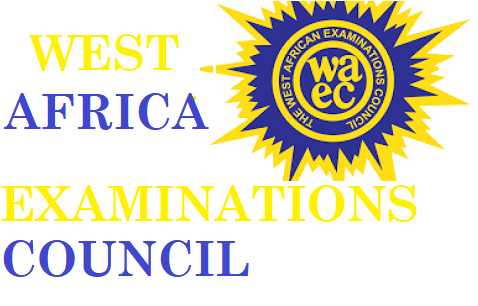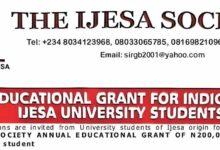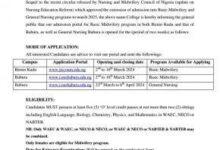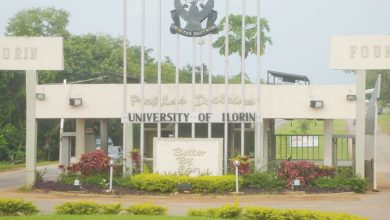
WAEC Syllabus for Food And Nutrition
WAEC Syllabus for Foods And Nutrition. WAEC Syllabus for Foods And Nutrition is available for all candidates who want to participate in the examination. The West African examination council (WAEC) has officially introduced a syllabus that will guide all the WAEC candidates who wish to write the WAEC examination this year. For a very successful WAEC Foods And Nutrition examination for this year, you need to check out the available areas of concentration. It has been divided into sections with chapters, followed by the topics to be covered in preparation for the exams. In the WAEC Syllabus for Foods And Nutrition, you will also see the format of how the WAEC Foods And Nutrition questions will be presented. Jamb form
There are always 3 sections to answer questions from. Paper 1 is Objective questions, paper 2 is essay questions and paper 3 is practical section. Where paper one (1) carries 1 hour for 60 marks; paper two (2) carries 40 marks for 1 hour 15 minutes while paper three (3) carries 3 hours for 100 marks.
👉 Relocate to Canada Today!
Live, Study and Work in Canada. No Payment is Required! Hurry Now click here to Apply >> Immigrate to Canada
This WAEC syllabus is for both the O’level WAEC and General Certificate Examination (GCE) candidates. Final year students in the senior secondary school level and external candidates are eligible to make use of this syllabus and prepare ahead of the examination.
See the full detailed information concerning the WAEC Foods And Nutrition Syllabus below.
PREAMBLES
Food is one the basic needs of man. Without good food, an individual would not be able to function properly in all spheres of life. Good food promotes health and therefore it is important that students are exposed to ways of selecting, preparing and cooking wholesome food for themselves and others.
Foods and Nutrition as a vocational subject prepares students for the world of work. It also encourages the creative use of local foods and associated food service to meet the nutritional needs and other demands of consumers.
AIMS AND OBJECTIVES
The general aims and objectives of the syllabus are for candidates to
(a) acquire basic knowledge about foods and nutrition;
(b) understand the relationship between nutrition and health;
👉 Relocate to Canada Today!
Live, Study and Work in Canada. No Payment is Required! Hurry Now click here to Apply >> Immigrate to Canada(c) identify career opportunities in foods and nutrition and acquire skills for further studies;
(d) apply the general principles underlying meal planning, selection, preparation and serving of food to feed family and other consumers for different occasions;
(e) understand the need for planning an efficient and safe kitchen;
(f) choose, use, care and store kitchen equipment and tools effectively;
(g) appreciate the importance of sanitation in the kitchen food preparation and service;
(h) apply basic principles underlying food processing, storage and preservation;
- acquire basic knowledge in consumer education;
(j) acquire research skills and use the information to experiment, develop and improve local dishes;
(k) set up a business in the food industry using all the basic skills acquired.
SCHEME OF EXAMINATION
There will be three papers, Papers 1, 2 and 3 all of which must be taken. Papers 1 and 2 will be a composite paper and will be taken at one sitting.
PAPER 1: This will comprise sixty multiple-choice questions, all of which are to be answered within 1 hour for 60 marks.
PAPER 2: This will comprise six essay questions out of which candidates will be required to answer four. The paper will carry 40 marks and will last 1 hour 15 minutes.
PAPER 3: This will be a practical test of 3 hour duration. It will carry 100 marks and will be conducted by a visiting examiner.
DETAILED SYLLABUS
| S/NO | TOPIC | NOTES |
| I. | NUTRITION AND HEALTH (1) Introduction to Foods and Nutrition
(2) Careers associated with Foods and Nutrition
(3) Basic Food Nutrients
(4) Meal Management
(a) Meal Planning
(b) Special Nutritional Needs |
(a) Meaning (b) Basic knowledge of Nutrition (c) Importance of Human Nutrition (d)Factors affecting Foods and Nutrition (e) Food Habits
(a) Careers associated with Foods and Nutrition (b) Factors that influence career choices (c) Characteristics required for Foods and Nutrition careers
(a) The nutrients and their nutritive values (b) Functions of the different nutrients (c) Sources of the different nutrients (d) Dietary deficiencies (e) Metabolism,(digestion and absorption of foods carbohydrate, protein, fat). (f) Knowledge and use of food composition table (g) Food tests: simple physical and chemical tests of food stuffs to detect presence of nutrients in foods e.g. proteins, fats and carbohydrates.
(i) Meal planning terms (ii) Reasons for planning meals (iii) Factors in planning meals (iv) General principles of meal planning (v) Meal patterns
(i) Nutritional needs for different groups e.g. pregnant, lactating mothers, infants and children, adolescents, adults and the aged, vegetarians.
(ii) Planning meals for people in health condition e.g. HIV & AIDS, invalids, convalescents, overweight, underweight, hypertension, diabetes etc.
|
| II. | FOOD LABORATORY AND EQUIPMENT
(1) The kitchen
(2) Kitchen equipment and tools
(3) Safety in the kitchen
(4) Sanitation in the kitchen |
(a) Types of kitchen e.g. traditional, modern, institutional. (b) Planning different types of kitchen. (c) Factors to consider when planning. (d) Cleaning agents and abrasives (commercial and local).
(a) Classes and types of equipment (b) Selection, use, care and storage of large and small equipment, fixtures and appliances.
(a) Types of kitchen accidents (b) Causes and prevention of accidents (c) Content and use of first aid box (d) Simple first aid treatment
(a) Personal Hygiene (b) Kitchen Hygiene e.g. general cleaning, waste disposal, pests and pest control.
(c) Food hygiene e.g. handling of foods, food borne diseases, food sanitation laws.
|
||||
| III. | FOOD COMMODITIES
(1)Animal and animal products – milk and milk products e.g Cheese, yoghurt – eggs, – meat, – poultry, – fish etc.
(2) Cereals/grains
(3) Fruits and vegetables
(4) Legumes and oily seeds |
Kinds/types and structure – Selection – Storage
(a) Kinds and forms (b) Importance of cereals and grains: – versatility – thickening – cheap source of energy/good source of roughage
(a) Classification of fruits/Classification of vegetables. (b) Structure, nutritive value and storage. (c) Important of fruits and vegetables in the diet, etc.
(a) Classification of legumes, oily seeds (b) Importance of legumes and oily seeds in the diet, etc. |
||||
| /NO | TOPIC | NOTES | ||||
| (5) Fats and oils
(6) Starchy roots and plantain
|
(a) Kinds and classification
– vegetable fats and oils – animal fats and oils (b) Uses in diet (c) Uses in the body (d) Health implications of fats and oils
(a) Types of starchy roots (b) Types of plantain (c) Types of dishes |
|||||
| IV. | FOODSTORAGE AND PRESERVATION
(1) Food spoilage
(2) Food preservation
(3) Food storage |
(a) Meaning of food spoilage (b) Causes and agents of food spoilage
(a) Meaning and importance of preservation (b) General principles underlying food preservation (c) Methods of food preservation
(a) Meaning and importance of food storage (b) Storage of perishable and non perishable foods (c) Storage space and equipment e.g. refrigeration, deep freezer, cupboards, shelves, granaries, barns etc. |
||||
| V. | FOOD PREPARATION
(1) Principles underlying cooking
(2) Methods of cooking
(3) Transfer of heat |
(a) Explanation of the concept of cooking (b) Reasons for cooking food
(a) Moist heat methods e.g. boiling, stewing, steaming etc. (b) Dry heat methods e.g. baking, roasting, grilling, frying etc. (c) Effects of heat on different food commodities e.g. animal products, cereals and grains, fats and oil etc.
Methods of heat transfer and meaning – Convection – liquid, gases – Radiation – space – conduction – solid metal |
||||
| S/NO | TOPIC | NOTES |
| (4)Cooking terms
(5) Food additives
(6) Flour Cookery and Confectionery (a) Types of flour
(b) Basic ingredients in flour cookery
(c) Raising agents
(d) Batters and doughs – Batters
– Doughs
(e) Cakes
(f) Pastries
|
Explanation of cooking terms
(a) Definitions (b) Types of food additives (c) Functions of additives (d) Selection and use of additives (e) Food adulteration
(i) Types of flour (ii) Ingredients in flour (iii) Uses of flour
– Flour, fat, sugar, eggs
(i) Types of raising agents, i.e., steam, carbon dioxide and air
(ii) Sources:- boiling liquid – steam, baking powder – carbon dioxide whisking – air
(i) Types of batters (ii) Uses of batters (iii) Dishes using batter
– biscuits – classification – rubbed in – creamed – whisked – melted – sponge mixtures
– rubbed in – creamed – whisked – melted – sponge mixtures
(i) Types of Pastries Shortcrust, suet, flaky, etc.
(ii) Principles underlying pastry making (iii) Pastry dishes e.g. turn over; jam tartlets, cornish pasties, etc. |
| S/NO | TOPIC | NOTES |
| (g) Yeast Mixtures
(h) Cake Decoration
Icing |
(i) Definition
(ii) Ways of preparing yeast mixture (iii) Important points in preparing yeast mixture (iv) Yeast dishes – bread loaves, bread rolls, doughnut
(i) Types of icing e.g. butter icing, royal icing (ii) Uses of icing (iii) Preparation of icing (iv) Using royal icing and butter icing |
|
| VI. | BEVERAGES
(1) Classification of beverages
(2) Importance of beverages
(3) Principles underlining preparation of beverage
|
(a) Non-alcoholic beverages – coffee and tea – cocoa drink – milk and egg drinks – fruit juices and fruit drinks – beef tea and lemon grass
(b) Alcoholic – beer – wine
– Nutritive values etc.
– Tea, coffee, cocoa etc. |
|
VII. |
CONVENIENCE FOODS
|
(a) Types of convenience foods (b) Selection and uses of convenience foods (c) Advantages and disadvantages of using convenience foods (d) Preparation of dishes using convenience foods .
|
| S/NO | TOPIC | NOTES |
| VIII. | RECHAUFFÉ (LEFTOVER) FOODS | (a) Explanation
(b) Importance of using left over goods (c) Rules/guidelines for using leftover foods (d)Rechauffé dishes
|
| IX | FESTIVE DISHES/SPECIAL OCCASION DISHES
|
(a) Explanation
(b) Occasions for festive dishes (c) Types of festive dishes/special occasion dishes (d) Preparation of festive dishes/special occasion dishes |
| X | ART OF ENTERTAINING
(1) Entertainment
(2) Table setting and etiquette
(3) Meal Service Style |
(a) Explanation (b) Types of parties (c) Occasions for parties (d) Points to consider when selecting types of parties (e) Factors that contribute to the success of parties
(a) Explanation e.g. table setting, cover, etc (b) Setting tables and tray for different meal and occasion (c) Table appointments (d) Table manners/etiquette
(a) Types of meal service – Informal meal service – formal meal service (b) Factors determining choice of service styles types of party
(c) Foods for special occasions e. g. birthday, naming ceremonies, weddings etc.
(e) Factors that contribute to the success of parties
|
| XI | EXPERIMENTAL COOKERY
(1) Research into Local dishes and Drinks
|
(a) Importance of research in Foods and Nutrition (b) Collection of information (data) (c) Research into local dishes (d) Development of new recipes (e) Improving existing recipes based on methods of preparation, Nutritive value, time and energy use and service/ presentation
|
| S/NO | TOPIC | NOTES |
| (2) Experiments | (a) Using fruits e.g. passion fruit, samia, royal palm fruit
(b) Other types of flour e.g. root, cereal and legumes, etc. |
|
| XII | CONSUMER EDUCATION
(1) Consumer Education
(2) Food Budgeting
(3) Food Purchasing |
(a) Meaning and principles (b) consumer agents
(a) Explanation (b) Factors to consider when budgeting
(a) Guidelines for shopping for food (b) Guidelines for bulk purchasing (c) Reasons for buying in bulk (d) Advantages and disadvantages of bulk purchasing |
| XII | SELF EMPLOYMENT
(1) Setting up and managing a catering enterprise
(2) Work ethics
(3) Packaging
|
(a) Explanation of terms – entrepreneur – entrepreneurship – enterprise
(b) Characteristics of an entrepreneur (c) Advantages and disadvantages of an entrepreneur (d) Setting up a catering entrepreneur (e) Some catering enterprises (f) Factors contributing to the success of an enterprise
(a) Explanation of work ethics (b) Good work ethics
(a) Explanation of Food Packaging (b) Reasons why food is packaged (c) Qualities of packaging materials (d) Types of packaging materials |
Check and Confirm: How much is Dollar to Naira Pounds to Naira Rate Today








